Increased Thirst: Why Is Your Dog Drinking More Water Than Usual in Winter?
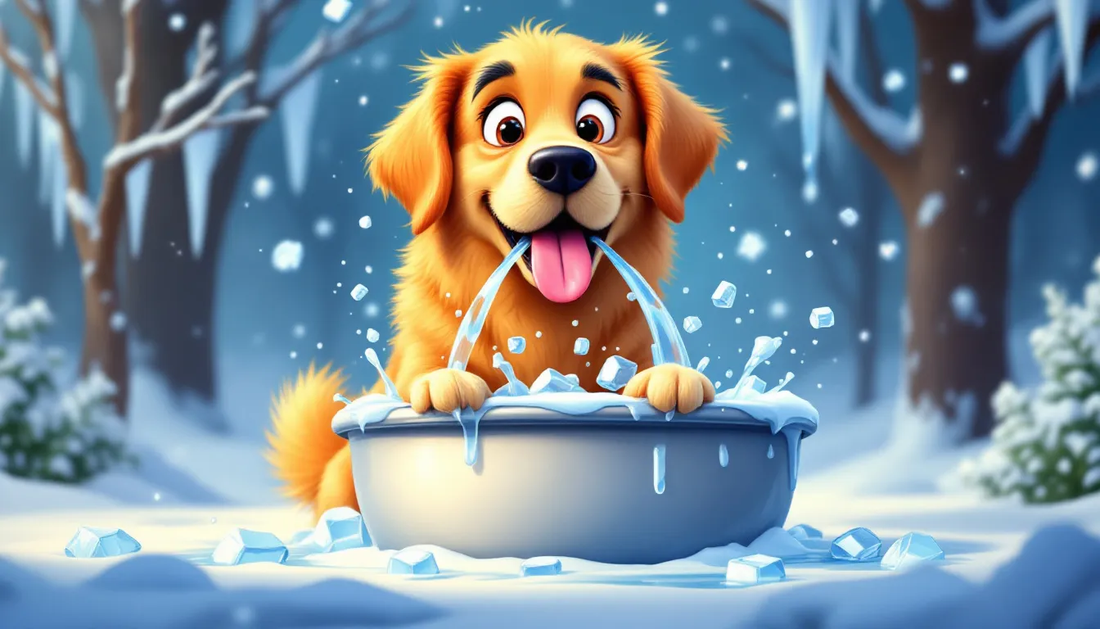
Increased Thirst: Why Is Your Dog Drinking More Water Than Usual in Winter?
Notice your dog drinking more water than usual in winter? It can be due to dry indoor air, heating, or health issues. This article dives into why your dog might be extra thirsty and how you can ensure they stay hydrated and healthy.
Key Takeaways
- Indoor heating and dry air in winter increase dogs’ hydration needs, making regular access to fresh water crucial to prevent dehydration.
- Cold weather can mask signs of dehydration; dogs may lose moisture more rapidly through their respiratory tract despite reduced thirst perception.
-
Diet plays a significant role in hydration; dogs on dry food require more water intake compared to those on wet or canned food.
Indoor Heating and Dry Air
Indoor heating systems, while keeping us warm and cozy, can significantly affect our dogs’ hydration levels. Heating systems intensify moisture loss in dogs, requiring them to drink more water to stay hydrated. It’s not only the heat but also the accompanying dry air.
Dry air in winter can lead to significant moisture loss from a dog’s body, increasing their risk of dehydration. The mix of indoor heating and dry winter air can be especially harsh, draining moisture from the skin and respiratory tract, necessitating increased water intake for dogs.
Owners should always have fresh water available for their dogs. Without easy access to water, dogs risk quick dehydration and serious health problems. Checking and refilling water bowls regularly is an effective way to prevent dehydration.
Placing multiple water bowls around the house can encourage dogs to drink more, helping them stay hydrated despite the dry indoor air.
Cold Weather and Increased Hydration Needs
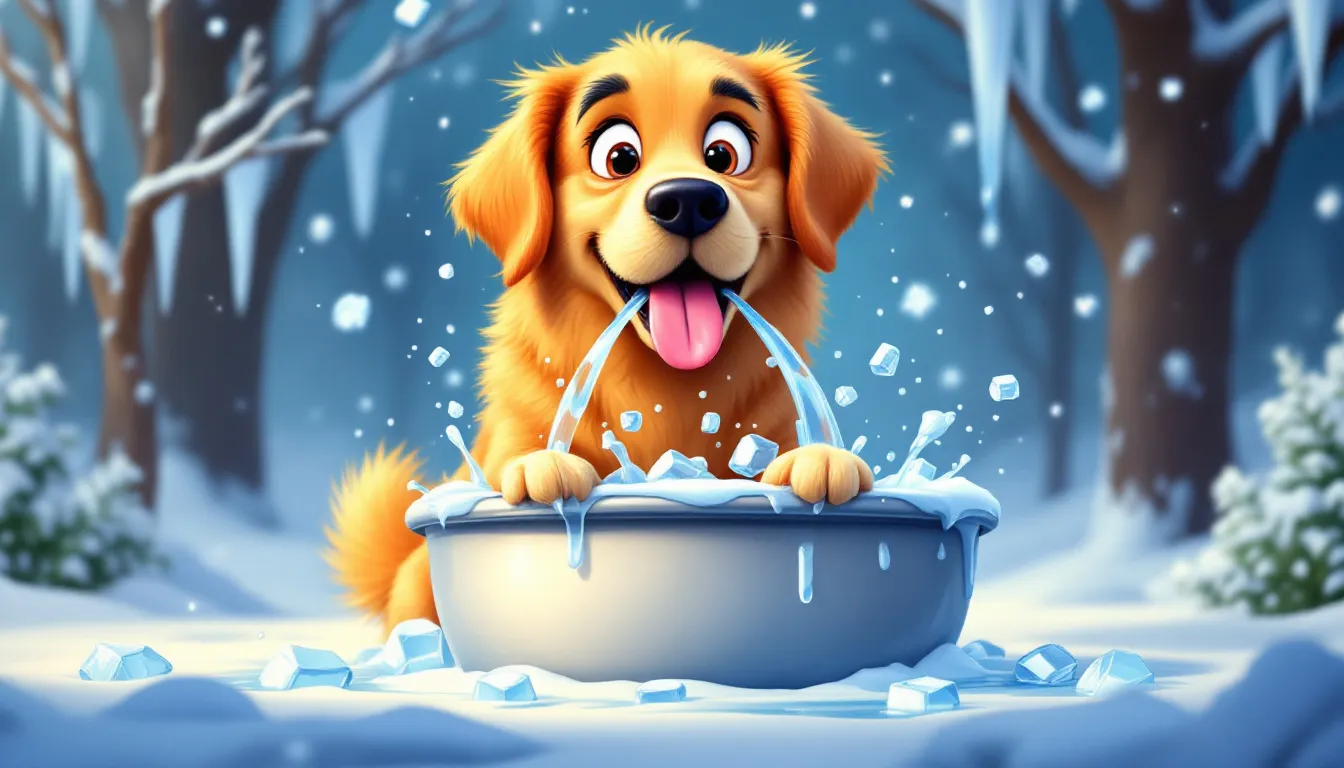
Cold weather can be misleading regarding hydration needs. Lower temperatures cause dogs to lose more moisture through their respiratory tract, making hydration necessary. Cold weather can reduce their perception of thirst, leading to less water intake.
Symptoms of dehydration in dogs, such as lethargy, sunken and dry eyes, and thick or sticky saliva, can often be mistaken for other winter ailments. Therefore, owners should closely monitor their dog’s water intake to prevent severe dehydration.
Indoor heating can make dogs feel warm and less thirsty, complicating the issue. Owners should encourage dogs to drink regularly, even if they don’t appear thirsty. Offering fresh water and making it more appealing by adding a bit of broth can help.
During cold winter months, regularly check your dog’s water bowl to keep it filled with fresh water. This proactive approach helps avoid dehydration, keeping your pet healthy and happy.
Recognizing Winter Dehydration in Dogs
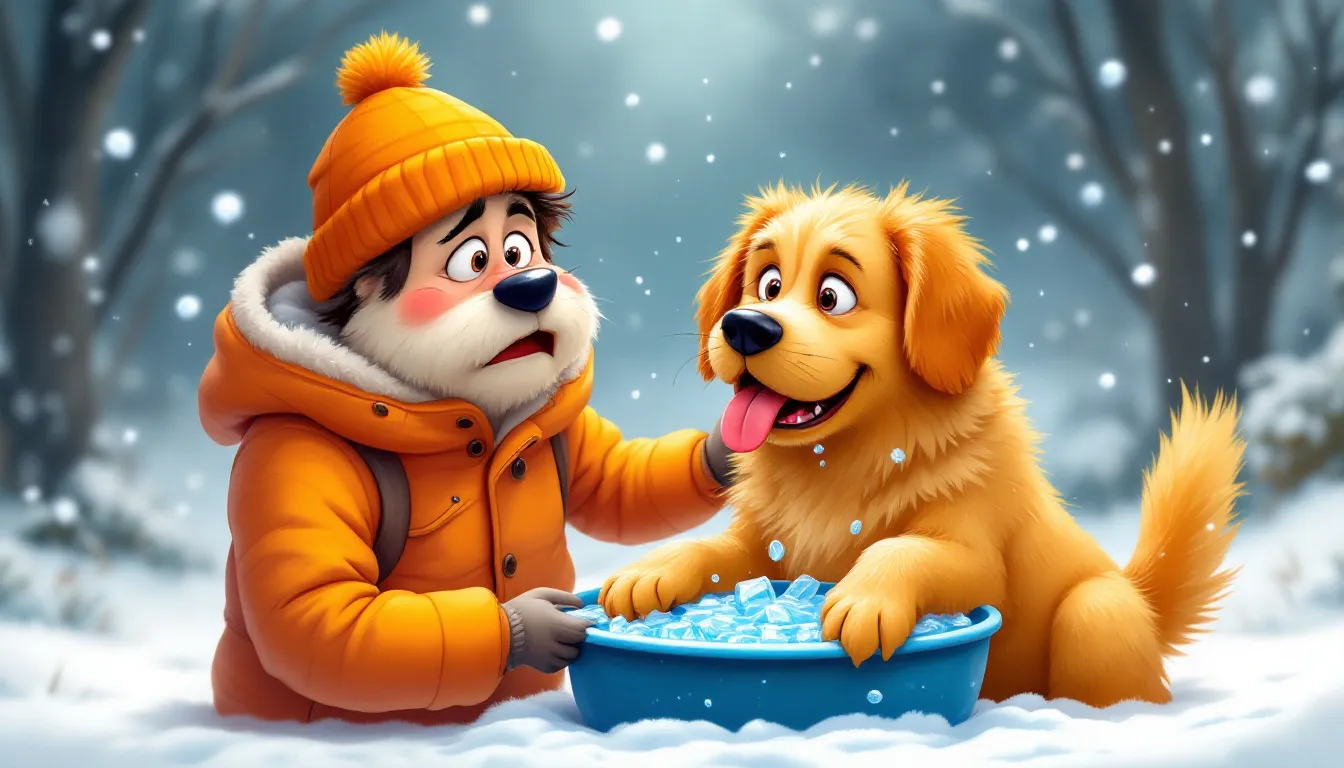
Identifying dehydration in dogs during winter can be challenging but is crucial. Typical signs include lethargy, tacky gums, and excessive tiredness. Unusual tiredness or sticky gums in your dog might indicate dehydration.
Unchecked dehydration can lead to serious health problems like kidney issues and urinary tract infections. These conditions can be particularly severe in senior dog and very active dogs, so vigilance during cold weather is essential.
If you suspect dehydration in your dog, take action immediately. Address the issue promptly. Consult a veterinarian immediately if signs like tacky gums or lethargy persist. Early intervention can prevent severe health issues, ensuring your dog remains healthy.
Regularly monitor your pet’s water intake and stay aware of dehydration signs to make a significant difference. Sufficient water intake during winter helps maintain your dog’s overall health and well-being.
Impact of Diet on Water Intake
Diet significantly influences a dog’s water intake. Dogs fed mainly dry food usually need more water compared to those on a wet food diet. Dry food lacks the moisture content of wet food, necessitating additional water intake for digestion and nutrient absorption.
Conversely, dogs eating wet or canned food generally drink less water since they get much of their hydration from their food. This helps maintain proper hydration levels without excessive dog drink.
A balanced diet with moisture-rich food significantly improves your dog’s hydration status. This is particularly crucial during winter when dehydration risk is higher. Managing your pet’s diet helps avoid dehydration and keeps them healthy and hydrated.
Health Conditions Leading to Increased Thirst
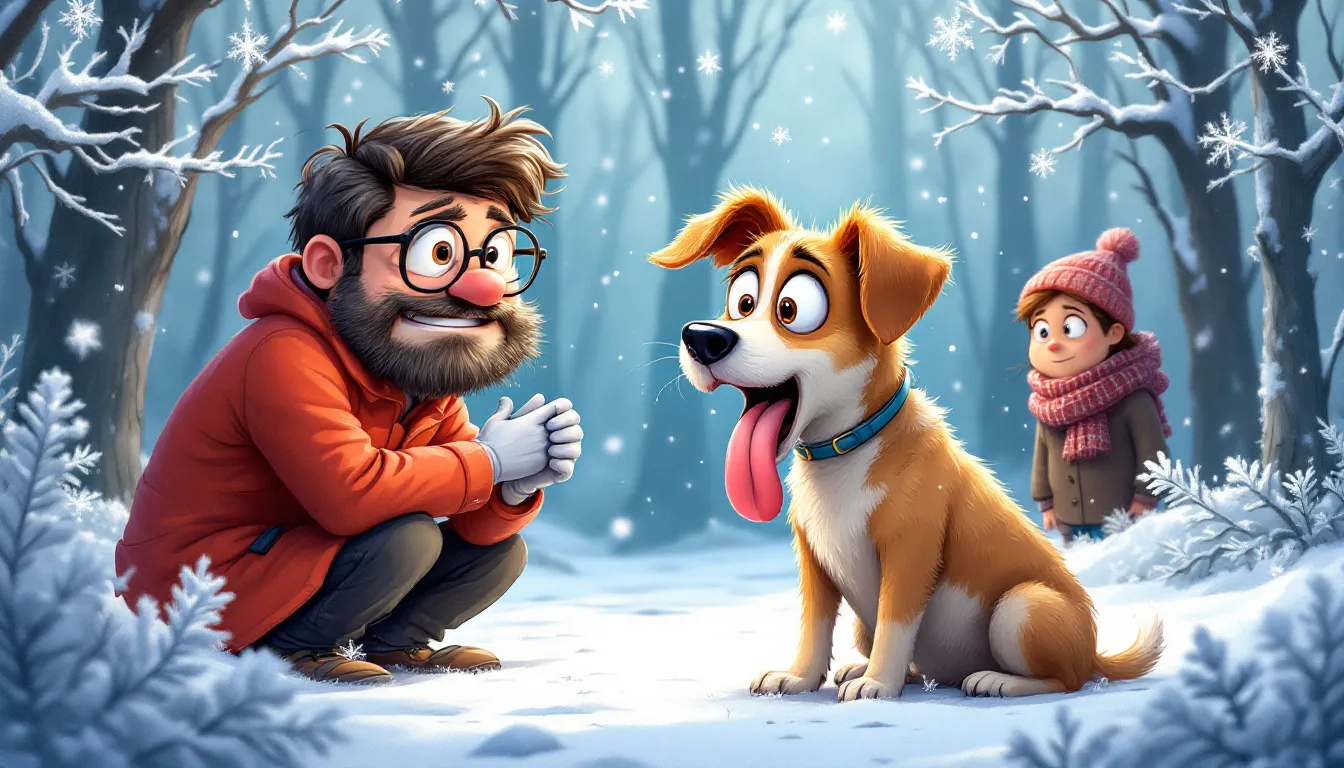
Several health conditions can cause increased thirst in dogs. Diabetes mellitus, kidney disease, and Cushing’s disease are common culprits. These conditions require careful management and monitoring.
Diabetes mellitus in dogs, caused by insulin deficiency, leads to excessive thirst and urination. Managing diabetes involves regular veterinary check-ups and careful monitoring of blood sugar levels.
Cushing’s disease, due to excessive cortisol from the adrenal glands, also increases thirst and urination. Symptoms include excessive drinking, urinary accidents, and abnormal smell. Diagnosis often requires a chemistry profile to assess kidney and liver function.
Kidney disease can also cause increased water intake as the kidneys struggle to concentrate urine. If not managed properly, this condition often leads to severe dehydration and kidney failure. Signs include increased thirst and urination. Consulting a veterinarian for diagnosis and treatment is critical.
If your dog shows excessive thirst, seek veterinary advice promptly. Blood tests, X-rays, or ultrasounds may be needed to determine the underlying cause. Early identification and treatment of these conditions can prevent more serious health issues.
How to Keep Your Dog Hydrated in Winter
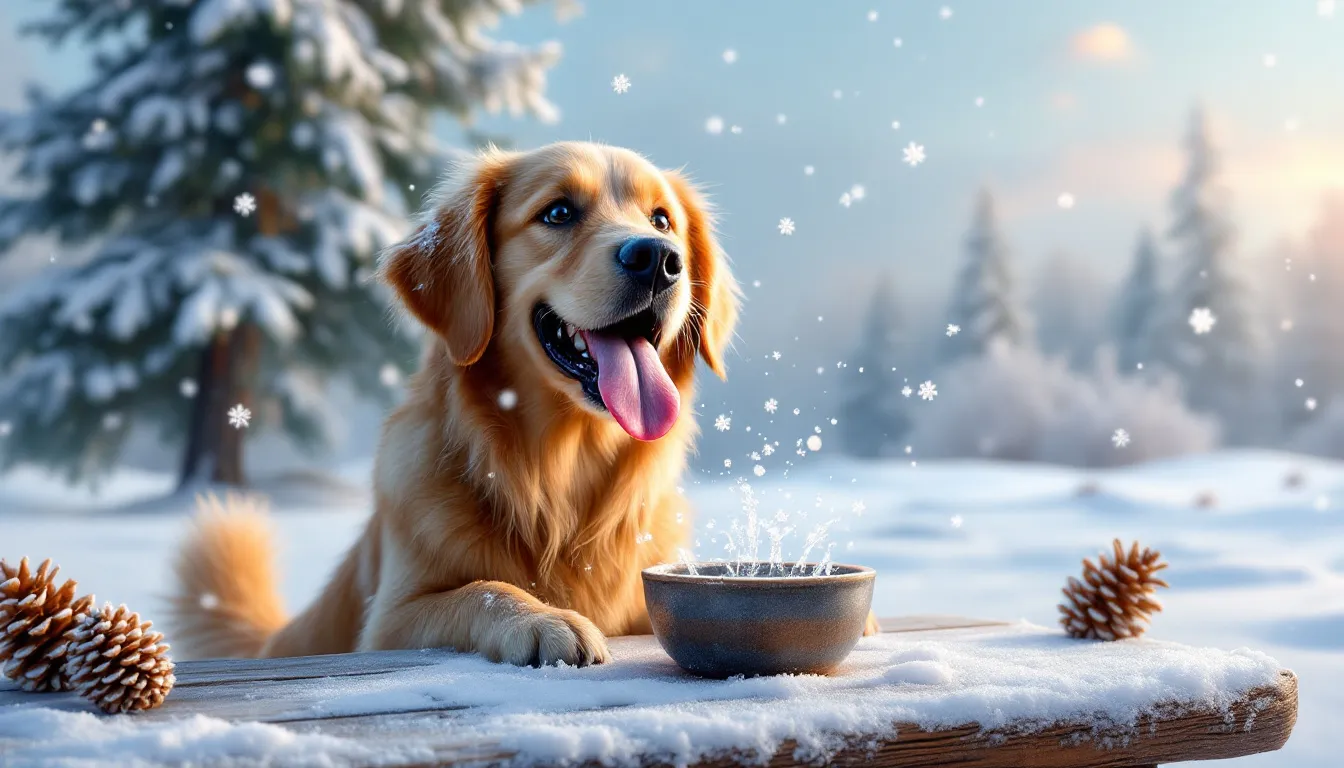
Keeping your dog hydrated in winter requires a proactive approach. Always provide access to fresh water. Regularly check your dog’s water bowl to keep it filled and clean.
Adding broth to water bowls can make drinking more appealing, encouraging your dog is drinking to consume more water. Using a pet fountain is effective since many dogs prefer running water.
Placing water bowls in different locations around the house can also encourage more drinking. Adding lukewarm water to your dog’s food can boost hydration, especially in colder weather.
Making a fruit smoothie for your dog can be a fun and tasty way to keep them hydrated. Research shows that dogs drink more with flavored hydration, keeping them well-hydrated and happy.
When to See the Vet
If your dog drinks excessive amounts of water, make a vet appointment. This is especially important if your dog suddenly starts drinking much more water than usual.
When visiting the vet, bring notes on your dog’s drinking and urinary behaviors, and possibly a urine sample. The vet will likely perform a full examination and recommend tests like a complete blood count and urinalysis to diagnose the cause of excessive thirst.
Water consumption exceeding 100 mL per kg of body weight per day is abnormal and needs veterinary attention. A thorough examination and diagnostics are essential to identify underlying health issues causing increased thirst.
Benefits of LYX Hydralicious Mix
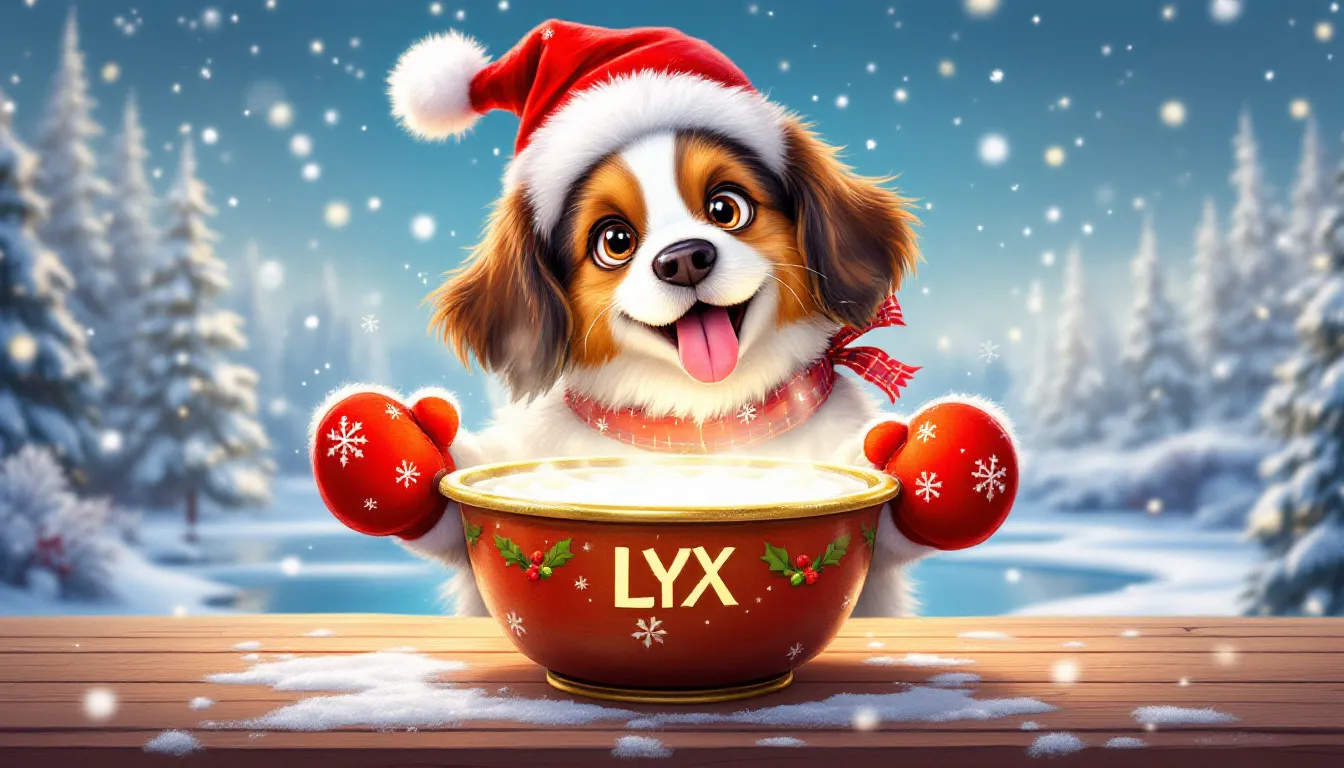
LYX Hydralicious Mix is a great solution for keeping your dog hydrated. Combining coconut water with savory chicken or beef broth, it offers a nutritious and appealing hydration solution. Crafted from simple, natural ingredients, the mix is suitable for dogs of all ages.
Coconut water in LYX Hydralicious Mix is rich in potassium, benefiting muscle function and fluid balance in dogs. This makes it an excellent hydration option for both active and senior dogs, supporting their overall health.
LYX Hydralicious Mix contains no sugar, preservatives, artificial flavors, GMOs, gluten, fillers, soy, dyes, corn, or byproducts. This ensures a pure and healthy hydration solution for your dog. LYX is dedicated to helping dogs stay hydrated, healthy, and happy.
Summary
Winter presents unique challenges for keeping our dogs hydrated. From the effects of indoor heating and dry air to the impact of cold weather, it’s essential to understand why your dog might be drinking more water than usual. By recognizing the signs of dehydration and taking proactive measures, you can ensure your dog stays healthy throughout the winter months.
Incorporating products like LYX Hydralicious Mix can provide an effective and enjoyable hydration solution for your furry friend. Remember, maintaining proper hydration is crucial for your dog’s overall health and well-being. Keep an eye on their water intake, provide them with a balanced diet, and consult your vet if you notice any concerning changes.
Frequently Asked Questions
Why is my dog drinking more water during winter?
Your dog may be drinking more water in winter due to indoor heating and dry air, which elevate their hydration needs. It's important to make sure they always have access to fresh water.
What are the signs of dehydration in dogs?
Signs of dehydration in dogs include lethargy, tacky gums, sunken and dry eyes, and thick or sticky saliva. If you observe these symptoms, seek veterinary assistance immediately.
How does diet affect my dog's water intake?
Diet significantly influences your dog's water intake; dry food requires them to drink more water, while wet food reduces their need for additional hydration. Always monitor your dog's hydration based on their diet.
When should I take my dog to the vet for excessive thirst?
You should take your dog to the vet if you notice a sudden increase in water consumption or if the excessive thirst lasts for more than a few days. It’s important to address this issue promptly to ensure your dog's health.
What is LYX Hydralicious Mix, and how does it help?
LYX Hydralicious Mix is a nutritious blend of coconut water and savory broth designed to hydrate dogs effectively. It supports both active and senior dogs with natural ingredients, ensuring their hydration needs are met without harmful additives.
